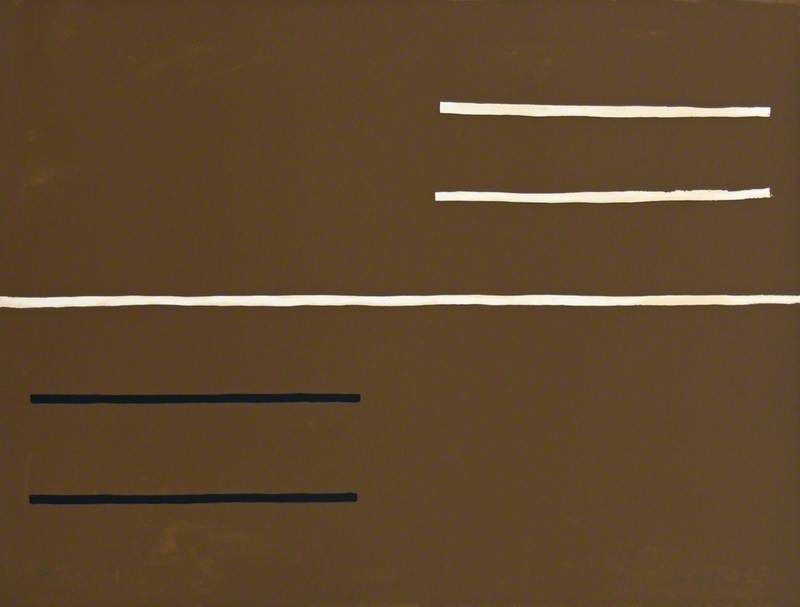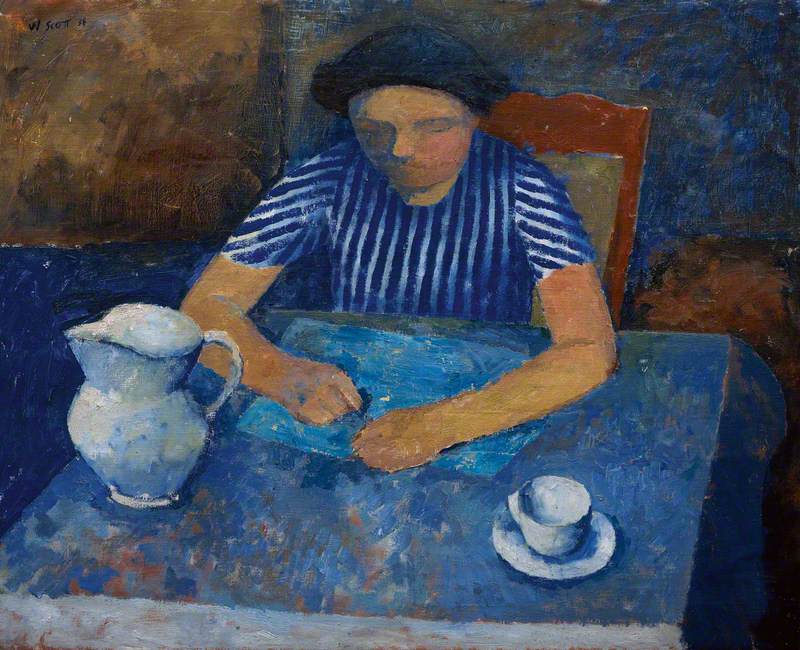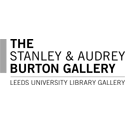William George Scott [commonly known as William Scott] was born in Greenock, Scotland, on 15 February 1913 and was the son of William John Scott, (1887-1927), a signwriter and house decorator. In 1924 he moved with his family to Enniskillen, co. Fermanagh, Northern Ireland. Whilst attending Enniskillen Technical School, he took evening classes in art and from 1928 to 1931 studied at Belfast College of Art. From 1931 to 1935 he studied at the Royal Academy Schools in London where he was taught by Sir Walter Westley Russell (1867-1949) and was awarded a silver medal for sculpture in 1933, the Landseer scholarship in painting in 1934, and a Leverhulme travelling scholarship in 1935. He then lived in France and Italy for three years, and in November 1938 exhibited at the Salon d'Automne in Paris.
Between 1939 and 1942 he lived briefly in Dublin, London and Hallatrow, Somerset, and taught part-time at Bath Academy of Art. He held his first solo exhibition at Leger Gallery in London in 1942. Between 1942 and 1945 he served in the Army during World War Two, making ordnance maps.
Following the war, Scott returned to Bath Academy of Art where he was senior painting master from 1946 to 1956. He subsequently also taught at the Royal College of Art in London and at Banff School of Fine Art in Banff, Alberta, Canada. In 1963-64 he was Ford Foundation Artist-in-Residence in Berlin.
Scott was primarily a painter, however, he also worked as a sculptor and printmaker. He illustrated at least one book - ‘Soldier’s Verse’, edited by Patrick Dickinson (London: Frederick Muller, 1945).
He exhibited at the Royal Academy, Leicester Galleries, Leger Gallery, Gimpel Fils, and Hanover Gallery in London; Royal Hibernian Academy in Dublin; Royal Scottish Academy in Edinburgh; and at international venues including the Biennale Internazionale d’Arte di Venezia in 1958 and the 6th Bienal Internacional de Arte in São Paulo in 1961, at which he was awarded the Sanbra Prize. A retrospective of his work was held at the Tate Gallery in London in 1972. Illness prevented him from exhibiting much after the mid-1980s.
He was a member of the London Group. He was elected an Associate of the Royal Academy (ARA) in 1977 and a Royal Academician (RA) in 1984.
Scott married the painter and sculptor Hilda Mary Lucas (1912-1989) in 1937. He died at his home, Bennetts Hill Farm in Coleford, Somerset, on 28 December 1989,
For a comprehensive account of Scott's exhibitions and a list of public galleries that possess examples of his work see Theo Snoddy. Dictionary of Irish Artists 20th Century. Dublin: Merlin Publishing, 2nd edition, 2002 pp. 591-595.
Text source: Art History Research net (AHR net)
































